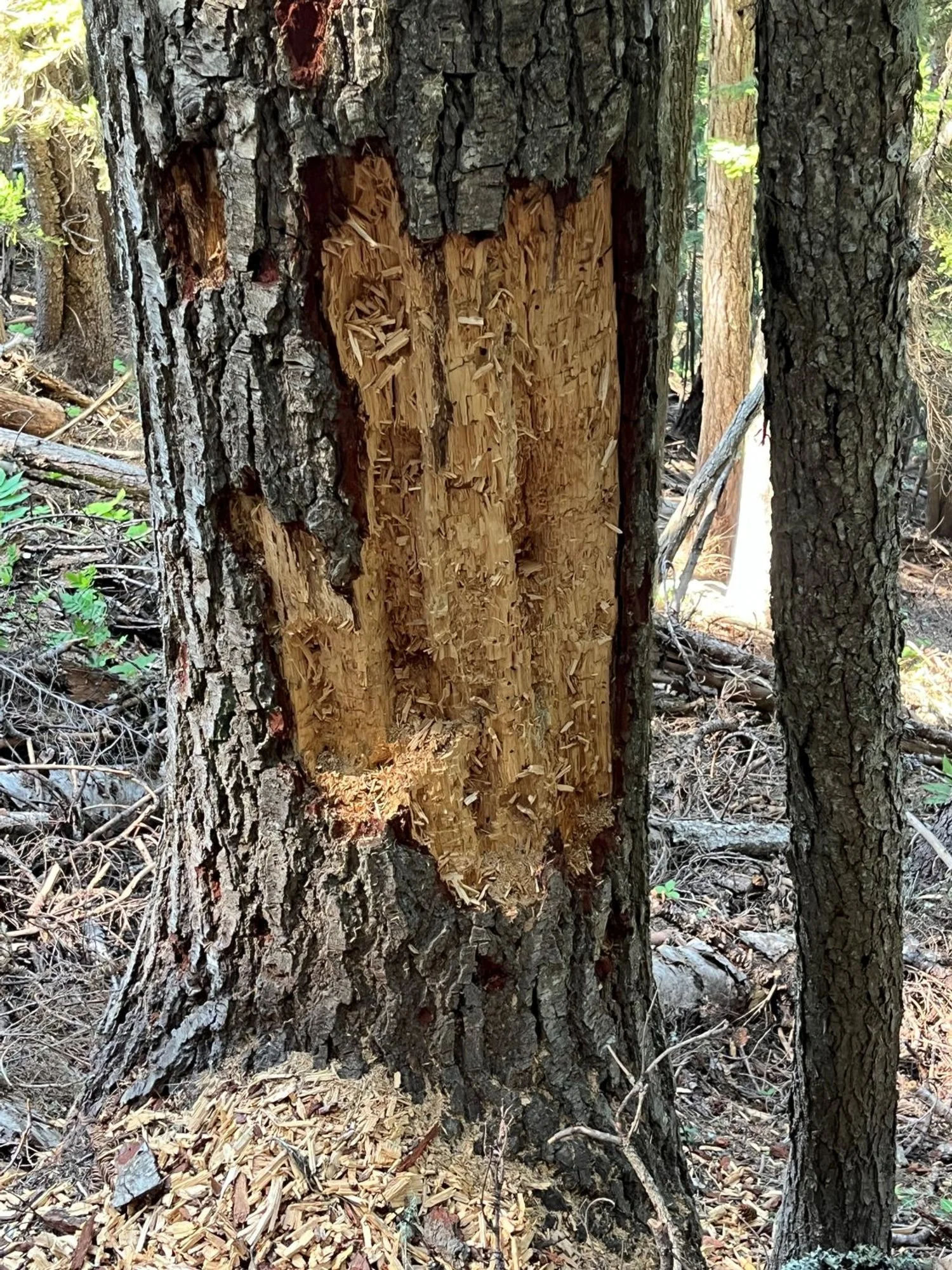
25. West Gumjuwac
Summary
Length 2 ½ miles one way to Gumjuwac Saddle
Difficulty Moderate
Season Summer to early autumn
Elevation range 3,550 – 5,220 feet
Human imprint Moderate (traffic noise from Highway 35)
Information Mount Hood National Forest (Hood River Ranger District)
Primary old growth features
Diverse mixed-conifer old growth across an eastside elevational gradient.
Description
The Gumjuwac Trail (480) ascends from Highway 35 up to Gumjuwac Saddle through an impressive array of old conifers featuring 12 different species. Although steep in places, the trail is well graded and lightly used, though mountain bikers may come bombing downhill around any corner. The trail tops out at Gumjuwac Saddle at an intersection with the Bennett Pass Road (FR 3550), the Divide Trail (458), and the Gunsight Butte Trail (685). A wooden sign at the saddle explains that ‘Gumjuwac’ derives from a French-Canadian sheepherder named Jack who always wore gum shoes and apparently liked to camp at the saddle.
From the parking area, the trail begins a series of switchbacks through stellar Douglas-fir old growth with grand fir, western hemlock, western redcedar, and occasional white pine and ponderosa pine mixed in. Old noble fir, Pacific silver fir, mountain hemlock, Engelmann spruce and western larch become more prominent after the first mile and a half, and a few lodgepole pine round out the coniferous ensemble.
The trail crosses the base of a rock outcrop after 1 ¾ miles, then switchbacks up around the formation to a spectacular cross-valley view of Mt. Hood. A young forest recovering from the Bluegrass Ridge Fire (2006) is starkly visible below the graceful peak. This could be a reasonable stopping point for the hike, but continuing on brings hikers to a notable stand of noble fir on a north-facing headwall. While the noble fir are not exceptionally large or old, the long, slowly tapering tree trunks and distinctive blue-hued crowns are worth a few moments of appreciation.
Gumjuwac Saddle lies just past the noble fir stand providing multiple options for continued hiking. A natural add-on is to take the Gunsight Butte Trail to the southwest for almost 1 ½ miles to the top of Gunsight Butte. The trail briefly passes through the Gumjuwac Saddle Fire, which burned at the same time as the Bluegrass Ridge Fire. Hikers can also extend their adventure by following the Upper Badger Loop (described as Hike 24), or by hiking north on the Divide Trail to panoramic Lookout Mountain, the second highest peak in the Mt. Hood National Forest.
30 Years of Change
There are fewer live western larch and western white pine still standing, as white pine blister rust and larch casebearer take their toll. The Bluegrass Ridge Fire (2006) is now prominent in the vista across the valley to the west.
How to get there
Turn west into a large parking area off of Highway 35 just south of Robinhood Campground (approximately 27 ½ miles south of Hood River and 10 ½ miles north of Highway 26/Highway 35 junction.) The trailhead is north of the bridge over the river on the east side of the highway.

Western redcedar and Douglas-fir

Orange-barked ponderosa pine

Mt. Hood

Blue-hued noble fir

Bear live here

Mountain hemlock

Western larch
